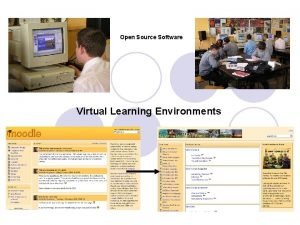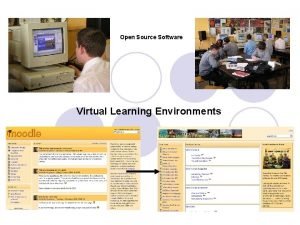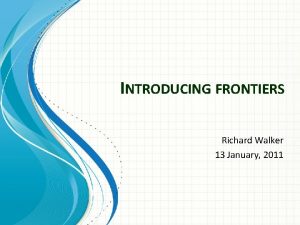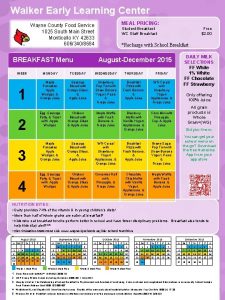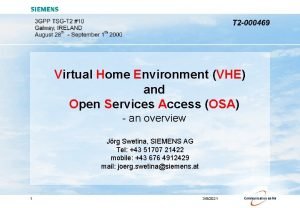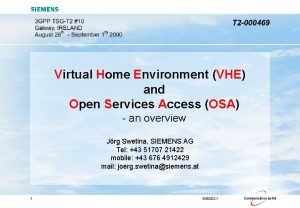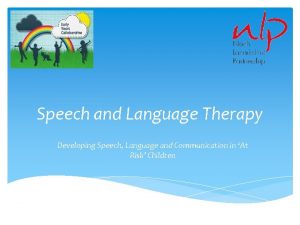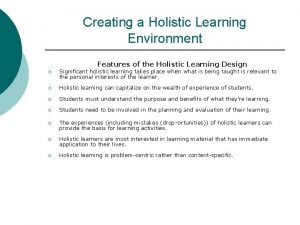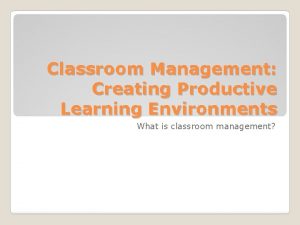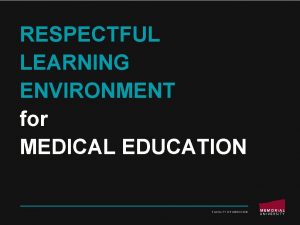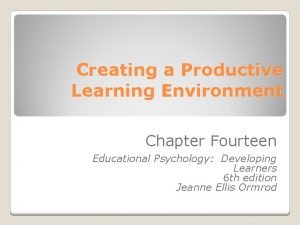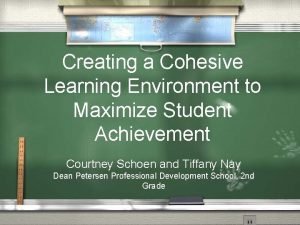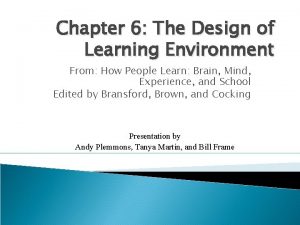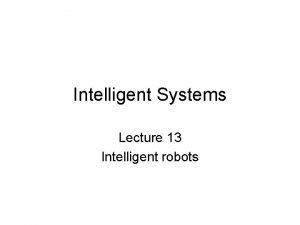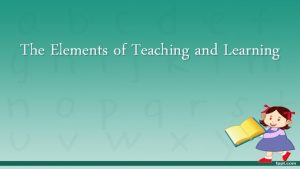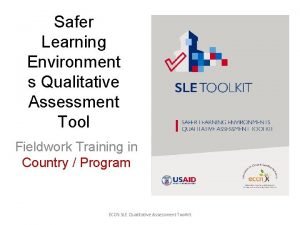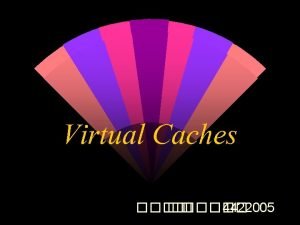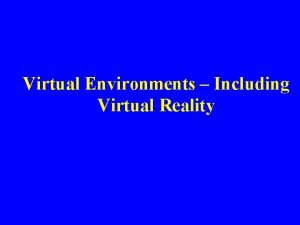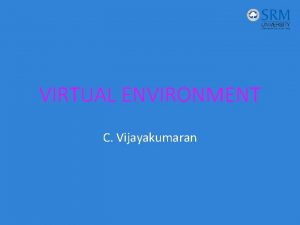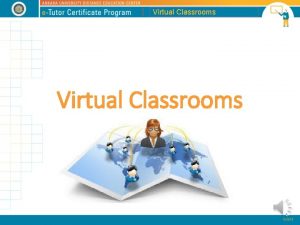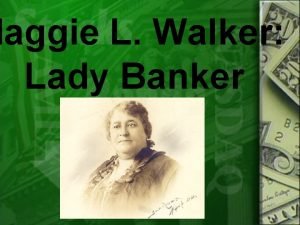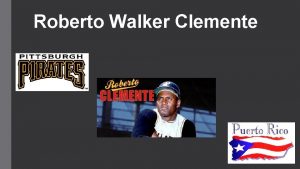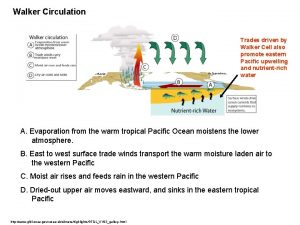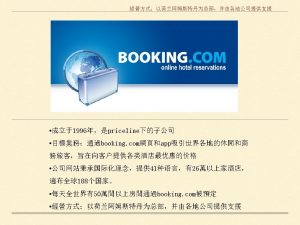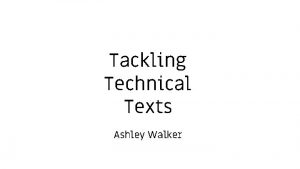Virtual Learning Environment Presentation Richard Walker 27 th























- Slides: 23

Virtual Learning Environment Presentation Richard Walker 27 th November, 2003

Presentation Aims 1. Introduction to the Learning Technologist – Background – Outline of the post – Role and responsibilities 2. E-learning: a working definition 3. What is a VLE? - What should a VLE do? 4. E-learning at York: current position 5. E-learning – goals and objectives 6. Critical success factors in a VLE implementation

1. Learning Technologist’s Background – Background • BA, MA, PGCE (History); MMD (Management Development); Ph. D (Educational Technology) • Academia – Cambridge University, SOAS - London University, Euro-Arab Management School, Nyenrode University - The Netherlands Business School • Work Experience – Monbusho (Toride City, Japan) EFMD & EAMS (Granada, Spain), Nyenrode University (The Netherlands)

Contact Details • Office: Room HG 10, Heslington Hall • E-mail: rw 23@york. ac. uk • Telephone: 3850

Outline of the Learning Technologist’s post • • • Based in Academic Support Office TQEF funded (July 2003 - Jan. 2004) Reporting to OLSIG Promoting case for VLE Pedagogical, not technical expertise!

Role and Responsibilities 1. Investigate requirements for a centrally supported VLE at York 2. Investigate conditions for implementation of VLE (2004 - ) 3. Raise staff awareness of e-learning / present case for a VLE 4. Identify and implement pilot projects with departments 5. Future tasks (2005 -)

2. ‘Online’ & ‘e-learning’: definitions • Online: synonymous with web-based learning - materials on the web & some ancillary (collaborative) discussion • E-learning: represents the whole category of technology-based learning (network/wireless/satellite) • “The use of technology to manage, design, deliver, select, transact, coach, support and extend LEARNING (of all kinds)” (Elliott Masie, 2001) • Holistic, systemic, competence-oriented • Courses, modules, smaller learning objects • Synchronous/asynchronous access - distributed geographically with varied limits of time

3. What is a VLE? • Communication tools (email, bulletin boards/ chat, whiteboard) • Student tools (calendar, check grades, submit assignments, glossary, search • Course information (syllabus, timetable, assessment) • Course material (activities, library and multimedia resources, assignments) • Self-assessment tools

What does a VLE do? • Controlled access to curriculum - mapped to elements (or “chunks”) that can be separately assessed and recorded • Tracking student activity and achievement against these elements • Support of on-line learning, including access to learning resources, assessment and guidance. • Communication between the learner, the tutor and other learning support specialists to provide direct support and feedback for learners, as well as peergroup communications that build a sense of group identity and community of interest • Links to other administrative systems, both inhouse and externally


4. E-learning – Current Position (a) • Online Learning Strategy – Approved 2002 (? ) – Learning Technologist appointed 1 July, 2003 • Committees and Working Group – OLSIG – Online Learning Strategy Implementation Group – OLSIG VLE Subgroup

E-learning – Current Position (b) HEFCE Capital Round 3 bid – Requirements gathering • Departmental audit – summer (FELT / best practices) • Student survey ( – 1 Dec. ) www. york. ac. uk/systems/feedback/user • WP & Careers • External consultation (Oxford, Sheffield) – Two specifications being compiled • Helicopter view document – Short and palatable • Detailed specification – Consultation & staff awareness • VLE Awareness Conference – 26 November • Departmental feedback on specifications (Jan. 15)

E-learning – Current Position (c) • VLE Experience at York – Good departmental initiatives • DERS – Web. CT Nathan Bodington – Open source • HYMS - Blackboard • Mathematics – Moodle – Open source • Social Policy and Social Work – UKe. U – Masters in Public Policy and Management – Sun, TALL and BBC

E-learning – Current Position (d) • E-learning projects (TQEF funded): – Jeanne d’Arc: an internet-enabled Special Subject module (Bbd software) (History) – Online In-sessional Support for International students in DERS (EFL) – Text-based annotation and discussion (Philosophy)

5. E-learning – Goals and objectives • Centre and departments – Avoid: • Fragmentation • Duplication of effort and expenditure • Information rich, information poor • Support blended learning

A VLE could bring the following benefits to York: • · Support new courses (open and distance learning) on a costrecovery and for-profit basis • · The development of shared teaching and learning resources across departments and reusable resources within departments • · The development of joint courses with other institutions, providing a basis for international partnerships and strategic alliances • · Flexibility in study benefits for all students, with special provision for disadvantaged groups, strengthening the University’s Widening Participation initiatives • · Support for student-centred learning, with provision for new learning experiences that complement class-based activities • · More efficient use of teaching space and contact time with students • · A coordinated means of collecting and collating student admissions and matriculation data E-learning discussion document Dr. R. Walker, Learning Technologist, 8 September, 2003

Strengths • Firm support from the foot soldiers • Human capital • Web Manager Post + Learning Technologist Post • “Second mover” advantage

Challenges (Weaknesses) • Many major projects competing for funding – Web Strategy, Online Learning Strategy, Records Management Strategy, … – New buildings – etc. • Cynicism – E-learning = the latest fad – E-learning = just shovelling course notes on the web • Funding – Centralised vs. decentralised – Post YIMS

6. Critical success factors in a VLE implementation (a) 1. Stakeholder buy in 2. Adequate resourcing – “A VLE is not just for Christmas” – Hardware and software minor financial components – Ongoing cost of support staff 3. 4. 5. 6. Consultation VLE champions Pilot stage Data feeds MLE

Critical success factors in a VLE implementation (b) 7. Training • • Staff Students 8. Set realistic aspirations 9. Paced rollout

End of Presentation • Thank you for your attention


 Btogrenme/moodle
Btogrenme/moodle Btogrenme/moodle
Btogrenme/moodle Richard walker frontiers
Richard walker frontiers King richard iii and looking for richard
King richard iii and looking for richard Walker early learning center
Walker early learning center Cuadro comparativo e-learning y b-learning
Cuadro comparativo e-learning y b-learning Financial environment in business environment
Financial environment in business environment Virtual home environment
Virtual home environment Virtual home environment
Virtual home environment Has virtual functions and accessible non-virtual destructor
Has virtual functions and accessible non-virtual destructor Richard stewart family learning centre
Richard stewart family learning centre Holistic learning environment
Holistic learning environment Productive learning environment
Productive learning environment Respectful learning environment
Respectful learning environment Productive learning environment
Productive learning environment Learning objectives of our environment
Learning objectives of our environment Cohesive learning environment
Cohesive learning environment Knowledge centered learning environment
Knowledge centered learning environment Jonassen constructivism
Jonassen constructivism Reinforcement learning agent environment
Reinforcement learning agent environment What are the elements of teaching and learning
What are the elements of teaching and learning Qualitative assessment tools
Qualitative assessment tools Moodle 51 sou
Moodle 51 sou Managed learning environment
Managed learning environment
